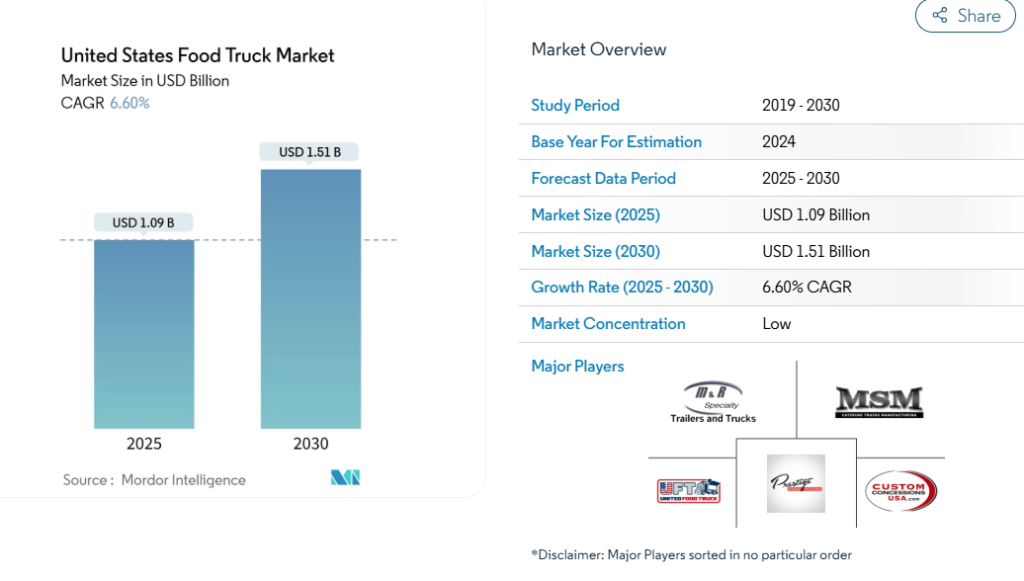The idea of owning an ice cream truck combines childhood nostalgia with modern entrepreneurial opportunity. From neighborhood routes to event catering, mobile ice cream businesses continue to thrive in this digital era, because of their low startup costs, flexible models, and strong community appeal. But the difference between a dream and a successful business lies in one thing — a solid business plan.
The modern ice cream truck is no longer just a vintage van with jingles. It’s a smart, mobile dessert business equipped with point-of-sale systems, contactless payments, GPS tracking, and creative digital marketing. From local parks and beaches to festivals and corporate events, an ice cream truck can go where customers are, turning every sunny day into a business opportunity.
If you’re dreaming of running your own ice cream truck, this step-by-step business plan will walk you through every detail—concept, legal requirements, market analysis, costs, operations, and strategies—so you can start strong and grow sustainably.
What Is an Ice Cream Truck Business?
An ice cream truck business is a type of mobile food venture that sells frozen desserts such as ice creams, sundaes, popsicles, milkshakes, and novelty treats directly to customers from a moving vehicle. Unlike fixed stores, trucks operate seasonally or daily in different locations—schools, parks, beaches, and neighborhoods—providing convenience and entertainment.

Market Potential and Size
- In the United States, the frozen dessert market exceeds $15 billion annually, with ice cream trucks representing a growing share thanks to local events and catering.
- Canada and the UK show increasing demand for artisanal and dairy-free options, while Australia’s warm climate provides nearly year-round opportunity.
- The global ice cream market is projected to surpass $122 billion by 2032, showing stable long-term growth.

Current Trends
- Premium and artisanal flavors – handmade, organic, and locally sourced.
- Vegan and lactose-free options – meeting growing dietary preferences.
- Mobile apps and digital tracking – letting customers find trucks in real time.
- Cashless payments – via POS systems and QR codes.
- Eco-friendly operations – electric trucks and biodegradable packaging.
Why You Need a Business Plan for an Ice Cream Truck
Before you buy a truck or scoop your first cone, you need a roadmap. A business plan provides clarity, structure, and strategy — essential for every stage of your entrepreneurial journey.
1. Clarifies Goals and Vision
Writing a business plan forces you to answer key questions: What is your target market? What type of ice cream will you serve? How much do you expect to earn monthly? Defining your vision gives your business direction and purpose.
2. Helps Secure Funding
Banks, investors, or even family lenders will only invest when they see realistic projections and structured operations. Your plan proves your commitment, risk awareness, and financial understanding. We’ll later explore financing options via funding for new business.
3. Acts as a Management Tool
A business plan keeps operations on track — from routes and staffing to sales targets and truck maintenance. It also provides a benchmark for measuring growth and making strategic adjustments based on real data through proper market research.
4. Builds Credibility and Brand Focus
A clear plan also helps build your identity. When you define your mission and audience, your marketing becomes sharper and your brand story more engaging. If you need help positioning your business publicly, explore how to build brand awareness.
Sources of Funding for Ice Cream Truck Business
Every business needs capital to start and sustain operations. The ice cream truck business is no exception — you need funds for the vehicle, refrigeration units, initial stock, branding, and legal permits. Below are the main sources of startup financing.
Launching your truck requires smart financial planning to get funding for your new business. Even though startup costs are moderate compared to traditional restaurants, you still need reliable funding for vehicles, equipment, permits, and inventory.
1. Personal Savings and Bootstrapping
Many owners start with savings or small family loans. This allows you to retain full ownership and control, but it’s essential to separate personal and business finances early.
2. Bank Loans and Microfinance
Banks offer small business loans with flexible repayment plans. To qualify, you need a clear plan, revenue projections, and a good credit history.
3. Strategic Partnerships and Investors
Forming partnerships reduces individual risk. Partnering with local distributors, dairy suppliers, or event organizers can accelerate your expansion. Please read detailed information of doing strategic partnership to understand collaboration strategies and mutual benefit models.
4. Government Grants and Support Programs
In many countries, food entrepreneurship programs offer microgrants to support small vendors, especially youth and women-owned businesses. A well-prepared plan helps you qualify faster.
5. Crowdfunding and Pre-Orders
Platforms like Kickstarter or local social campaigns allow early supporters to fund your truck launch. Offer exclusive perks like “first scoop” days or limited-edition flavors to motivate backers.
6. Vendor Leasing and Equipment Financing
Instead of buying everything upfront, lease your refrigeration units, POS systems, and even the truck. Though long-term cost may be higher, it lowers initial capital needs.
Each funding route requires strategy. Diversify your sources and maintain transparent documentation to build trust and ensure sustainable cash flow.
How to Complete a Business Plan for an Ice Cream Truck Business
Creating a full business plan takes time, but once done, it becomes the backbone of your success. Below is a section-by-section walkthrough.
Executive Summary
Write this last but place it first in your document. In two pages, summarize your concept, mission, target customers, products, and financial highlights. Mention your funding requirements and projected growth. A concise executive summary convinces investors that your idea is both creative and financially viable.
Company Description & Ownership
Here, explain your company name, location, and ownership structure. Whether you’re a sole proprietor or forming a private limited company, define the legal framework. For help choosing the right format, review Types of Business Ownership Structures.
Market Research and Industry Analysis
Analyze your local area. Who are your customers — families, offices, schools, or event venues? Identify competitors and evaluate market gaps. Rely on authentic data sources as discussed in market research to validate your decisions. Highlight industry growth, seasonal demand, and customer spending patterns.
Product Development and Menu Strategy
Your product mix defines your profitability. Offer variety: cones, sundaes, soft-serve, dairy-free, and vegan sorbets. Use creativity while maintaining quality. To learn innovation frameworks and testing cycles, visit product development. You can also list your suppliers, storage procedures, and flavor experiments here.
Marketing and Branding Plan
Marketing turns your truck into a recognizable local brand. Combine digital promotion, local community outreach, and event participation. Include color themes, logo design, and social media strategy. Enhance visibility with proven branding techniques.
Operational Plan and Logistics
Document how daily operations will function: staffing, routes, shift timings, safety checks, and maintenance. Describe inventory control, hygiene standards, and waste management. Detail supplier coordination and fuel management.
Risk Management and Exit Plan
Identify major risks — mechanical breakdowns, weather, or regulatory changes. Add mitigation tactics such as maintenance schedules, seasonal promotions, and alternate income sources. Explain possible exit routes (sale, expansion, or franchising).
This full plan template turns your vision into a professional business document capable of attracting capital, partners, and long-term loyalty.
Industry Overview and Market Opportunities
The frozen dessert industry continues to grow due to rising consumer demand for convenient treats and experiential food experiences. Mobile dessert businesses like ice cream trucks benefit from lower overheads compared to fixed storefronts, allowing faster return on investment.
Emerging Trends
- Health-conscious desserts: low-sugar, lactose-free, and plant-based options.
- Cashless payments: digital wallets increase convenience.
- Event-based selling: weddings, birthdays, and corporate events provide steady off-season income.
When exploring business potential, review a great food business ideas that complement frozen dessert trends, such as smoothie trucks or waffle pop carts. Market data shows that even in cooler months, strong branding and partnerships sustain profits.
Operational Plan & Management
Running an ice cream truck business efficiently requires a clear operational framework — from supply chain and staffing to vehicle maintenance and customer service. Operations are the heartbeat of your business, ensuring that every scoop delivered meets your quality standards, safety requirements, and customer expectations. A well-structured operational plan helps reduce costs, maintain hygiene, and increase daily productivity, especially when your business is mobile and weather-dependent.
Equipment and Vehicle
List all assets — truck, freezers, generators, POS system, storage, signage. Choose vehicles with proper insulation and easy maintenance.
Daily Workflow and Scheduling
Establish a consistent daily routine to maximize sales and minimize waste.
- Morning: Clean the truck, stock inventory, test freezer temperatures, and confirm route schedules.
- Afternoon: Serve at planned stops or pre-booked events, track customer flow, and monitor real-time sales data.
- Evening: Return to base, reconcile cash or POS data, clean equipment, and document sales.
A well-organized daily routine improves efficiency, reduces fuel usage, and ensures you’re always prepared for busy hours.
Staffing and Training
Even a small ice cream truck needs trained, friendly staff. Hire employees who understand hygiene and customer engagement. Provide training in food handling, cash management, upselling, and emergency procedures. Every staff member should be aligned with your service philosophy — cleanliness, courtesy, and consistency.
Product Development Cycle
Managing stock is critical for minimizing spoilage. Maintain accurate inventory logs to track sales and predict restock needs. Build strong relationships with suppliers for consistent delivery of ingredients, cones, cups, and packaging.
Use temperature logs to ensure compliance with food safety standards. Develop an ordering cycle — weekly or biweekly — depending on sales volume and storage capacity. Proper coordination reduces stockouts and keeps freshness intact.
Compliance and Safety
Mobile food businesses must comply with strict hygiene laws, health permits, and environmental regulations. Register your business legally, obtain vendor licenses, and ensure regular inspections.
Always display certificates visibly inside your truck to build customer confidence. Maintain health and food safety guidelines of WHO and fire safety kits onboard. Follow local noise and parking regulations to avoid penalties.
Technology and Management Tools
Modern operations rely on digital systems. Implement POS software to record transactions and analyze customer preferences. Use GPS tracking to optimize routes and save fuel. Mobile apps can also manage employee shifts, vendor communications, and expense reporting. Regularly back up your data and review monthly operational reports to identify growth patterns.
Continuous Improvement
Finally, treat your operations as a living system — review performance, gather feedback, and make improvements. Encourage customer input through QR-based surveys or social media polls. Use data insights to refine your routes, adjust inventory, or introduce seasonal offers.
An effective Operational Plan & Management system not only streamlines logistics but also enhances customer satisfaction and brand trust. With clear processes, skilled employees, and consistent monitoring, your ice cream truck can run like a perfectly tuned engine — dependable, profitable, and ready to serve joy every day.
Financial Plan & Profit Forecasting
Sound financial management keeps your business stable during off-season months.
Startup Costs
Estimate purchase or lease of truck, refrigeration, branding wrap, initial stock, and licensing fees. Typically, startup investment ranges from $15,000–$30,000 depending on scale.
Revenue Forecast
Project revenue based on daily sales targets, average ticket size, and operating days per month. Consider three scenarios — conservative, moderate, optimistic.
Expense Forecast
Include fixed and variable costs such as:
- Fuel and maintenance
- Ingredient and packaging costs
- Wages and insurance
- Marketing and event fees
Break-Even and ROI
Calculate when your income covers your expenses. This helps define realistic timelines for profitability.
A disciplined financial plan is the core of every profitable venture.
Conclusion and Next Steps
Starting an ice cream truck business in this digital era of technologies can be a rewarding journey combining creativity, community, and cash flow. But success depends on preparation. A robust Ice Cream Truck Business Plan allows you to understand your market, manage operations efficiently, and scale strategically.
When you combine passion with structure, your ice cream truck becomes more than a business — it becomes a neighborhood favorite. So, start planning today, refine your model, and turn your dream of a rolling dessert empire into reality.


